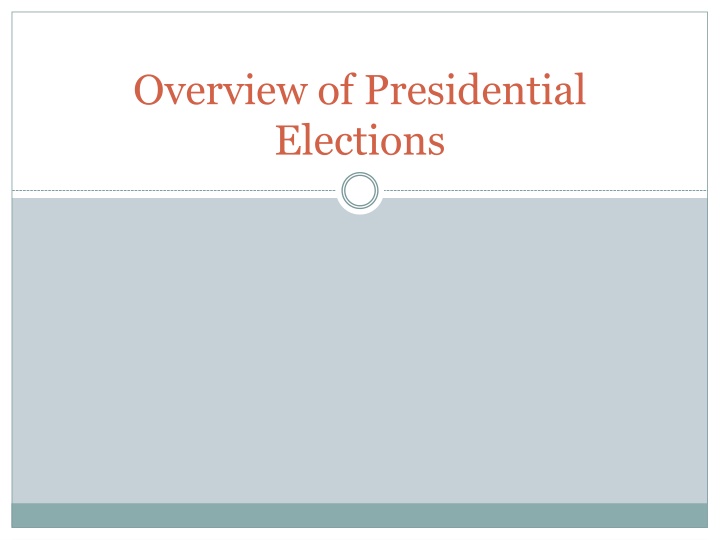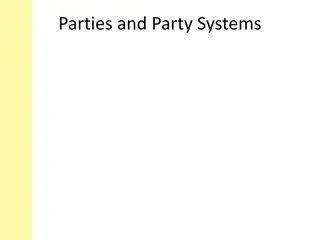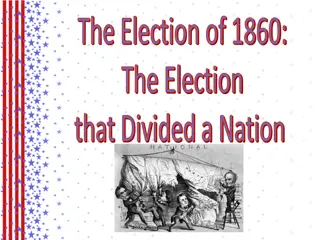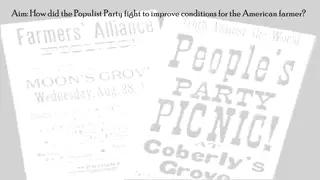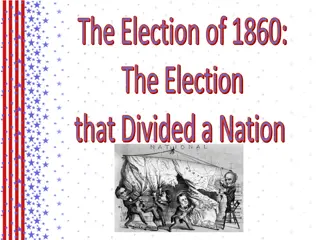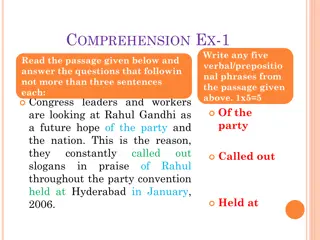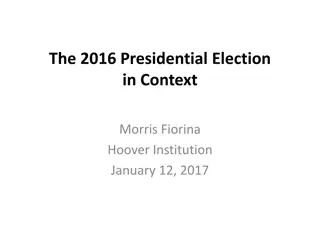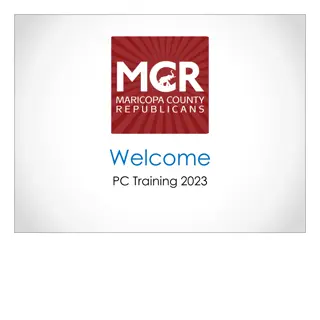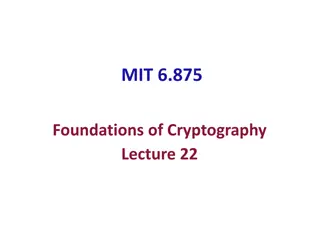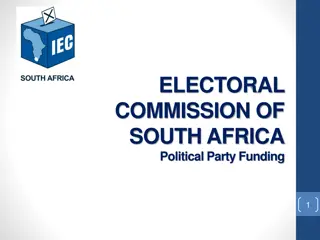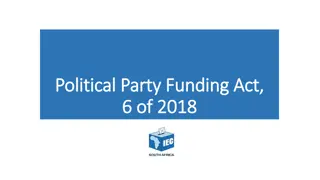Evolution of American Party Systems: A Historical Overview
American party systems have evolved significantly over the centuries, from the Framers' Non-Partisan System to the New Deal Party System. Each era was characterized by different parties, ideologies, and voting trends, reflecting the changing sociopolitical landscape of the United States. From the collapse of the Federalist Party to the rise of mass parties, civil war disruptions, and the consolidation of the Solid South, these developments shaped the foundation of modern American politics.
Download Presentation

Please find below an Image/Link to download the presentation.
The content on the website is provided AS IS for your information and personal use only. It may not be sold, licensed, or shared on other websites without obtaining consent from the author.If you encounter any issues during the download, it is possible that the publisher has removed the file from their server.
You are allowed to download the files provided on this website for personal or commercial use, subject to the condition that they are used lawfully. All files are the property of their respective owners.
The content on the website is provided AS IS for your information and personal use only. It may not be sold, licensed, or shared on other websites without obtaining consent from the author.
E N D
Presentation Transcript
Overview of Presidential Elections
The American Party Systems Framers' Non-Partisan System (1789-1792) First Party System (1796-1816) Democratic-Republicans (agrarian/labor) (commercial/financial) (mostly South & West ) (Northeast & especially N.E.) vs. Federalists Congressional Caucus nominating system Era of Good Feelings and One-Party Factionalism (1820-1824) collapse of Federalist Party collapse of Congressional Caucus
Party Systems (cont.) Second Party System (1828-1852) Democrats vs. Whigs (Nat. Reps.+ Anti-Masonic) (agrarian and lower-class) (commercial and upper-class) largely non-sectional rise of mass parties and campaigns origins of party organization based on patronage greatly increased franchise and turnout creation national nominating convention extensive third party activity (and fusion) Civil War Disruption (1856-64) Democrats (pro-South) (North) vs. Republicans (N. Whigs + Free Soil)
Party Systems (cont.) Third Party System (1868-1892) Democrats vs. Republicans (agrarian + labor + immigrants) (commercial/industrial) (South plus some North) (most of North) very close and high-turnout elections from 1874 onward frequent divided government after 1876, consolidation of Solid South rise of political machines based on patronage highpoint of party-dominant nominating politics introduction of Australian ballot and anti-fusion laws agrarian protest third party movements
Party Systems (cont.) Fourth Party System (1896-1928) Democrats (+ Populists) agrarian plus immigrants) (commercial/industrial) (South plus some West and some cities) (Northeast & Midwest) vs. Republicans maximal sectionalism black disenfranchisement in the Jim Crow South rise of Progressive political reforms voter registration, primaries, initiative and referendum, etc. decline of voting turnout rise of mixed system of nomination (with Pres. primaries) political machines begin to decline
Party Systems (cont.) Fifth (New Deal) Party System (1932-1968) Democrats vs. Republicans (labor/ethnic/urban plus South) (business & prof. [outside of South]) class based politics (outside of South) New Deal vs. anti-New Deal increased turnout civil rights movement and cracks in the old Solid [Democratic] South conflict between new reformers and old bosses origins of mass media campaigns, etc.
Party Systems (cont.) Sixth Party System (1972-2000+) Democrats ( liberals ) ( conservatives ) (pro-New Deal remnant) (anti-New Deal remnant) (great majority of non-whites) (majority of whites) rise of social/cultural issues vs. Republicans rise of candidate-oriented Pres. nominating politics migration of white Southerners from Dem ==> Rep rise of candidate-centered politics and media campaigns era of divided government (Rep. Presidents vs. Dem. House)
Party Systems (cont.) Seventh Party System (2000? - ???) Democrats ( blue states ) ( red states ) coastal America middle America secular America religious America (great majority of non-whites) (majority of whites) increased turnout dominance of social/cultural issues solidification of solid Republican South (Cong. + Pres.) strengthened party identification in electorate greatly strengthen party unity in Congress extremely close Presidential and Congressional elections resumption of unified government vs. Republicans
Realigning Elections 1796-1800 ushering in First Party System 1828-1832 ushering in Second Party System 1856-1860 ushering in Third Party System 1896 ushering in Fourth Party System 1932-1936 ushering in Fifth Party System 1964-1972 ushering in Sixth Party System 2000-??? Ushering in ????
